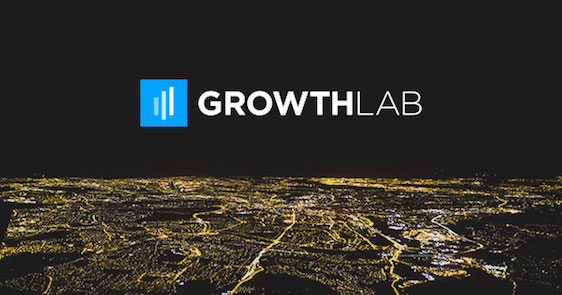| Hi,
In 2010, we created our flagship course on freelancing, Earn1K.
It cost $1,000.
A few years later, we dropped our most expensive course ever: 6-Figure Consulting.
6FC cost $8,000.
So how did we increase our price point by a factor of EIGHT?
Today, I want to share some insights on how to think about creating advanced material. When should you create a more advanced version of your product? How do you know people will buy? What should you charge?
These are tough questions. You won't see much out there about advanced content for 3 major reasons: - The market for beginner products is usually 100x larger than advanced products, so most people offering business courses rationally go where the market is.
- When it comes to advanced strategies and tactics, few people want to reveal what actually works -- often because revealing the tactics will destroy their effectiveness. (But more commonly: nobody cares or it's too hard.) That's why you'll hear experts talking about A/B testing button colors, but they'll never share the actual approaches that are generating millions for them.
- Most people are, by definition, not advanced. Neither are businesses. So there are really only a few people playing at an elite level -- and usually, they're busy operating, not writing about it for the rest of the world.
| | However, my team and I are weird exceptions, and I love this stuff, so now I want to share the thought process that goes into creating an $8,000 - $10,000 product. When should you create it? How do you know you're ready, and how do you go from a $4.95 e-book to a $10,000 course?
Note: This is advanced material. If you're still figuring out how to launch your first product, this email isn't for you. You don't just come out of the gate creating a $10K product, just as you don't come out of the womb benching 225.
But if you have a solid $1,000-range product and think you're ready for what's next, it's important to make sure you get all of these prerequisites handled first. 1. You have a world-class beginner product that has no room to improve | | We launched Earn1K in 2010 for $497. We already knew the material was solid from testing it, but over the next year, we watched over a thousand paid customers go through the material. We documented where they got stuck and we asked what they wanted more of.
In 2011, we released Earn1K 2.0. We included new strategies and material. We also doubled the price of the product based on 2 things: - The market told us we'd undercharged for the initial launch, and
- We'd significantly improved the product. (We provided the product updates to early customers for free.)
| | If you don't have either of these, don't bother creating a more advanced product. You need to fix your first product and make it bulletproof. This is really hard for people to hear, since it's much more fun to create something new than to go through the grind of slowly improving something you've already released.
It's also the right decision. | | Once you get this right, you'll see your retention rates skyrocket. Most importantly, your students will begin getting amazing results and asking you for more material to help them in the next stage of their journey. Like this: | | "In my short 3 months as a freelancer, using your principles, I booked 2 major clients that paid me over $8,000 combined. That's 3 months' salary (in Shanghai) for about 10 hours of work per week!" -- Vickie W.
"To think back on how 4 years ago, I had no idea how I was going to make that same amount of money during a whole summer vacation, and now, I made it in under a week of work is beyond what I hoped for, and I just wanted to say -- THANK YOU SO MUCH." -- Ella P.
"Earn1k has helped me to pick up AU$8000 in consulting this month, increasing my before-tax income this month by 70%... Gotta go, I've got a deliverable to complete." -- Dan S. | | This takes patience and time. But know what takes more time? Creating a product you have no expertise creating, with no customer base, while fixing up your earlier material. Go slowly. 2. You're starting to hear seagulls | | If you listen hard, you can start to hear trends that others don't recognize. I call this The Seagull Theory:
In 1492, Columbus kept a diary of his voyage. In September, he wrote this: | | "That day they navigated, on their westerly course, day and night, 20 leagues, counting a little less. Here those of the caravel Niña reported that they had seen a tern and a boatswain bird, and these birds never go more than 25 leagues from the land." | | In other words, he noticed the birds…and knew he was close to land.
You can use this principle in business and personal life, too. I call it The Seagull Theory.
The Seagull Theory describes how the subtlest of clues can signify you're on the right track. For example, when someone says something once, you might not notice it. When you hear it again, that's interesting. When you hear it three times, you lean in and start paying attention.
Listen for seagulls in business. For example, when I went on a book tour and asked readers, "What do you want me to write more about?", the first person said, "How to make more money." I asked more people. Almost all of them said, "How do I earn more?" I was skeptical. After 15-20 people saying the same thing -- or seeing 15-20 seagulls -- I realized I had to dig into why I kept hearing this over and over.
I leaned in, listened, and turned that insight into a course, which has now helped thousands of students start side businesses and generated millions of dollars.
That course was Earn1K, by the way.
Once you start hearing students ask for more and more, you want to lean in and listen. Are they really serious? Or are they just looking for an excuse not to do the work? The key is to look for the RIGHT seagulls.
This is a serious concern. People are happy to tell you all the things they want: They "want" more advanced material, new tactics, and a pony and free drinks for the rest of their life.
That doesn't mean they're going to pay. |  I threw my computer out the window after this. I threw my computer out the window after this. | | That conversation makes me mad, because if someone didn't know better, they might listen to that feedback. They might spend a year rewriting a book, thinking lots of people want a post-Brexit book. And when they launch, they'll be shocked that exactly 0 people will buy.
"But...but...people told me they wanted it!" People lie. People deceive. People don't know what they want. It's your job to probe, dig, and uncover their real desires. Ramit's guide to finding seagulls |  This is how I work most days, by the way. This is how I work most days, by the way. | | For example, I had hundreds of people from our first Earn1K launch tell me they wanted an affiliate program so they could refer the course to other people. This was before I realized that people often say one thing and mean another. So I went out and built this entire affiliate system. It took months. The result: 0 NEW AFFILIATE SALES. Damnit.
This time, when people said they wanted more advanced material in Earn1K, I probed. In fact, instead of believing them, I started with the idea that I wanted to disprove their request -- not confirm it.
(You can watch me doing customer research, live, right here. Pay close attention to how I'm interacting with people as I'm doing customer research. What do you notice?)
Or I'd send an email like this: | | "Hi John. I noticed you sent us an email about getting more advanced material. I'd love to learn more. Can you tell me a little bit about your Earn1K business? How many clients do you have and what kind of revenue are you generating?" | | 99% of people would respond like this: | | "Wow, I never thought I'd hear back! Well, I'm just starting my business, so I have 1 client. It's slow-going but I can tell this is going to grow really fast and I'd love to know what my next steps are." | | BZZT! In other words...this guy was never going to pay for an advanced course. He's not ready for advanced material -- even if it were free! -- so there is absolutely zero chance he would pay more for an advanced course.
This is an extremely important point. Do not skip over it! It's tempting to believe everything people say they want. But "listen to your customers" does not mean believing everything they say -- it means being extremely judicious with the resources you have to deliver something customers will pay for.
Sure, it may mean you'll miss out on rapid opportunities. But... | | I'd rather be late -- but right -- than early and wrong. | | (Of course, ideally you're early and right.)
Over time, we grew Earn1K into thousands and thousands of customers. Many of them went on to great success, building 6-figure businesses like Julia (a caricature artist who used to charge $8.95/drawing, and now generates $25,000 in side income). And Greg who went from working for beer to making $100/hour.
Predictably, we continued to get more requests for advanced material. At first, I ignored them because they were vague requests ("I love it, I'd definitely love more tips").
But over time, the questions got more specific: | | "Ramit, I've used Earn1K to grow my business to $86,000 in revenues, but I'm stuck. I have 14 clients and I don't know how to grow without working for 22 hours/day. How do I take it to the next level?" | | "My Earn1k business is humming along and crossed over into the 6-figure range this year. Now I want to know how to take it to the next level. Should I hire and go the agency route? Raise my prices? I tried hiring one person, but it didn't work out. What path should I take?" | | THESE are serious questions from serious buyers. You can tell because they're specific, detailed, and they come from people with money. These are the seagulls we're after. 3. You're actively researching your CURRENT customers (and they want to buy) | | At this point, we decided to get proactive with our research. We asked our Earn1K students what their biggest challenges were and how much they were earning. We also asked, "If we created something on XYZ, would you be interested in joining? The course would probably include advanced material and would be a premium course -- likely several multiples of Earn1K." You can see we were intentionally trying to dissuade all but the most serious people.
We discovered that we had a sizeable amount of Earn1K graduates who were earning serious revenue -- between $75,000 and $200,000 -- with their Earn1K businesses. Importantly, they wanted to grow. That last point is not always the case, but it's critical if you're thinking about creating an advanced business.
The signs began to be undeniable. We were getting too many emails -- at least 2 per week -- from people who wanted more advanced material. Through our research, we learned that they came from two areas: - Successful Earn1K students, the ones earning $75,000 - $200,000. Many had gone full-time. This was our primary market for an advanced course.
- Interestingly, there was another market: Since we'd been writing about freelancing for years now, we'd started getting known in the marketplace for having solid advice on consulting and freelancing. Out of that group, some hadn't joined Earn1K because they couldn't afford it. Some people didn't join because they were never going to buy -- they were looky-loos. And others hadn't joined because they were too advanced. THAT small last group -- people who knew about our reputation, but were too advanced for Earn1K -- was also our market.
| | The takeaways from the above 2 points are important: Create an amazing product and make sure the market knows. If you do that, you may have the room to create advanced versions of your product. Without that, you're toast. 4. You think about how FUN it would be to create advanced material | | Hey, one quick question: How come everyone obsesses about money but nobody talks about FUN? Why do so many entrepreneurs spend all their time talking about conversion rates and upsell formulas...while ignoring doing what actually gets them excited?
In terms of revenue, an extra $10,000 is meaningless to me. But I'll go to the ends of the earth to do something new and fun.
The truth is, I spend most of my days talking about advanced strategy with my team. But with Earn1K, I had to boil that down to beginner concepts. I was itching to share more advanced techniques -- like how to move up the value chain, how to double your business revenue in a year, how to find high-value clients and over-deliver. This stuff gets me excited!!
I'd gotten good at consulting. I'd charged $25,000 for a single day of consulting. And I absolutely loved teaching strategy to ambitious entrepreneurs. |  My payment for one day of consulting My payment for one day of consulting | | But I didn't want to spend the considerable amount of time and resources putting it all into a course...until I knew there were buyers.
Fortunately, our research told us there was a sizeable group of serious buyers and my team and I were bursting at the seams to share more advanced material. WE WERE READY TO GET MORE ADVANCED!
So what happened here? - We were methodical. You'll notice entrepreneurs who build one product, then immediately rush to create other products. Improving an existing product and carefully doing ongoing customer research is (a) slow, (b) boring, and (c) not as sexy as launching something new. We highly recommend this.
- We were in no rush to create an advanced product. We didn't NEED the revenue or attention from a more advanced product. We took our time and zeroed in on the right market.
- But when we did, we went all in. We dedicated significant resources to researching and confirming what our advanced students wanted. We spared no expense (even hosting a live event at one point) to make sure we nailed the high end product.
| | And the result? The $8,000 6FC course has made us 7 figures in revenue. But most importantly, it's resulted in BIG WINS for our students, totaling much much more and feedback like this: | | "Ramit -- Completed 6 Figure Consulting in Dec 2013. Took 2014 to build better systems and master the delivery process. Also, spent that time experimenting with proposal structures and moving the contract values higher.
Sharing a milestone:
Previous 12 month contract: $16,800
Moved up the value chain:
New 12 month contract value: $136,000
An 810% increase from previous 12-month retainer with this client. More responsibilities and a strategic partner relationship." -- Peter L. | | My thanks in advance for your time, attention and consideration.
Now -- what else would you like to know about creating an advanced product? Drop me a comment on GrowthLab.
John
P.S. And if you're interested in joining the waitlist for 6-Figure Consulting, click here.
%%
|   | | |











